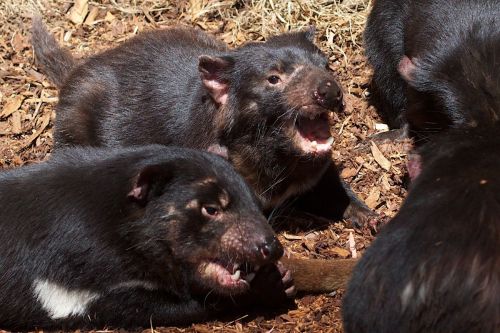Octopuses are cephalopods with eight arms. So far, about 300 species of octopuses have been identified. The first octopuses appeared on Earth about 323 million years ago. Find out interesting facts about these amazing creatures.
Due to the soft body of these organisms, there are not many octopus fossils found.
They live in different habitats depending on the species. Some octopuses live in the depths of the ocean and can be found at depths of 1000 meters. Others inhabit coral reefs or shallow tidal pools.
Octopuses have two eyes, one on each symmetrical part of their body. Color discrimination in these animals varies depending on the species.
Individuals with this feature are, for example, representatives of the species Cirrothauma murrayi.
They use the phenomenon of adhesion to grip or manipulate objects.
The motor skills of these cephalopods are not managed by the brain but by their unique nervous system located in their legs.
Their circulatory system is a closed system with one systemic (main) heart, pumping blood through the animal's body, and 2-gill hearts, which are used to pump blood through the gills. The systemic heart of octopuses consists of one ventricle and two atria.
This causes the octopus to tire quickly and therefore the organisms prefer to move along the bottom using their arms.
According to research, while an octopus is resting, up to 41% of its oxygen needs can be met by cutaneous respiration.
The radula is made of chitin and its task is to crush food that has entered the mouth.
They feed mainly on crustaceans and polychaetes, although they do not despise other mollusks. The octopus menu also includes shrimp and fish.
This organ stores sepia, produced by a nearby gland. Octopuses use sepia to disorient a predator while escaping. They then spray a thick, characteristic black stain.
After the offspring hatch, the octopus dies of hunger because, after the breeding period, the digestive glands of these animals are deactivated.
During research on octopuses, their visual glands were removed, and as a result, adults stopped guarding their offspring, began to eat again, and their lifespan increased significantly.
They place them in rock crevices in the form of special strings of eggs. The eggs are then guarded for approximately 160 days when the baby octopuses hatch. In colder waters, octopus eggs can develop for up to 10 months.
During studies on these animals, the presence of both short and long-term memory was found.
It was first described in 1910. The largest octopus of this species ever encountered weighed 272 kilograms and had an arm span of 9.6 meters. The giant octopus is also one of the most long-lived octopuses, it can live up to 5 years.
Thanks to special cells in their skin, they can adjust their skin color to the environment like a chameleon. Camouflage is used by these animals both for hunting and hiding from predators.










